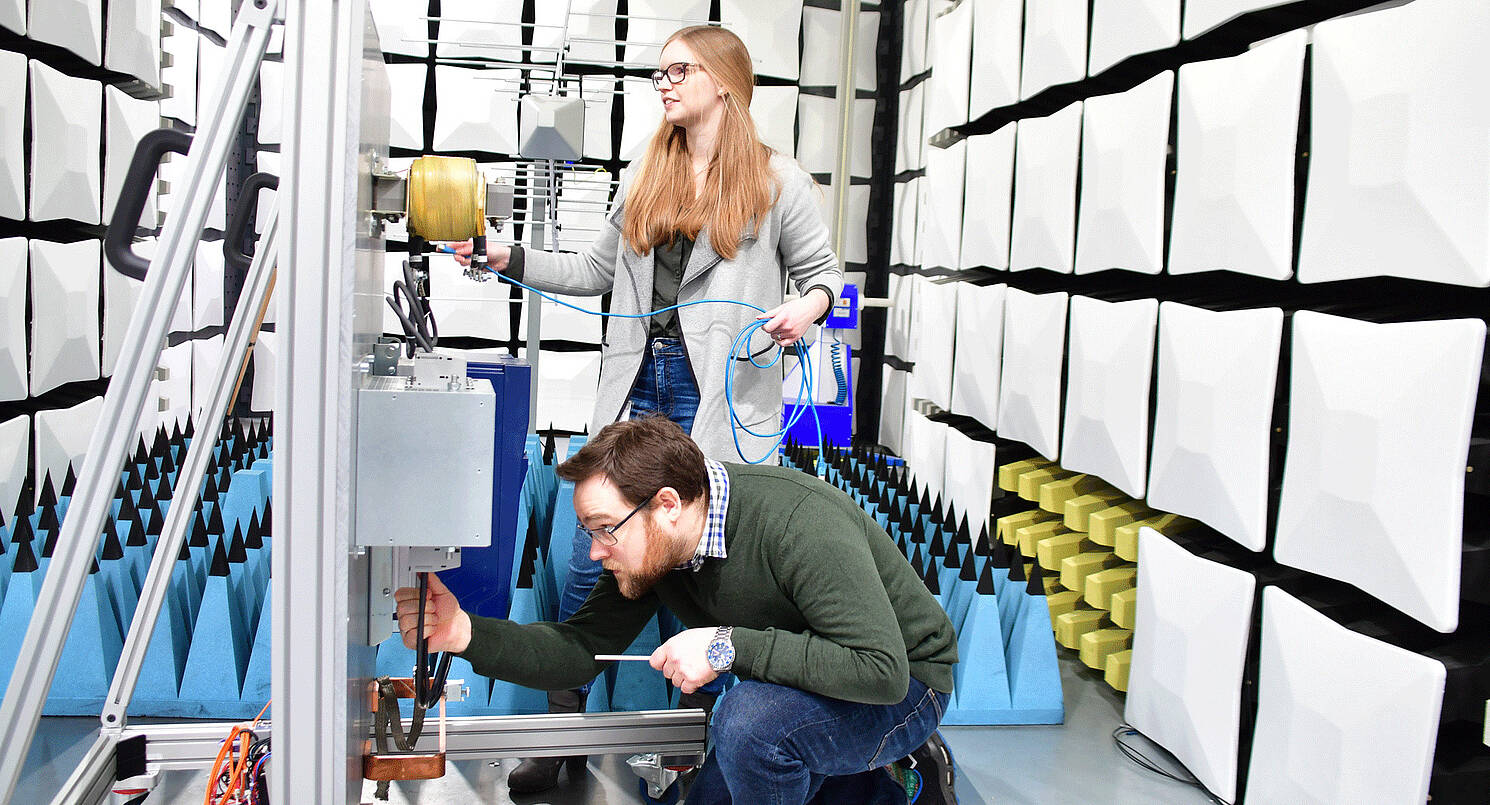What does an EMC laboratory do?
Electromagnetic compatibility: test for inverters & co.
Before drive controllers and other products from KEB Automation are used in machines and plants, they pass through the company's own EMC laboratory. Here, the devices are tested with regard to their electromagnetic compatibility. Are the inverters interference-proof? Do they themselves possibly interfere with other components? Bastian Pukallus is the head of the EMC laboratory at KEB and explains in this interview what can happen if the tests are not carried out and why good EMC of the product is only “half the battle”.

Why should equipment such as frequency inverters be tested for electromagnetic compatibility?
Firstly, the Electromagnetic Compatibility of Equipment Act (EMC Act) actually requires testing by law. In principle, however, the electromagnetic compatibility (EMC) of equipment ensures a high level of interference immunity and limits interference emissions. Depending on the product and area of application, the requirements for electromagnetic compatibility can be more lenient or stricter. If a piece of equipment, such as a frequency inverter, is subject to electromagnetic interference, the machine will, in the simplest case, come to a standstill for a while. However, machine damage or even personal injury is also conceivable. To prevent this from happening, products are tested for their EMC.
What role do other connection components such as cables play in addition to the drive controllers?
Good “product EMC” is powerless against poor “environmental EMC”. Current physics describes coupling mechanisms that are always present. They can only be specifically weakened or consciously utilised to ensure good EMC of the system. This requires a basic understanding of EMC on the part of the system designer. But even engineers who have been dealing with EMC for years still fall into one or two EMC traps. Precisely because the subject is very complex, KEB provides good instructions on how to achieve EMC-compliant installation in practice.
What steps does the EMC testing of KEB Drives typically consist of and what happens if the test reveals any faults in the devices?
We first define operating states that are representative of customer applications and of course cover the majority of the functions that our inverters provide. In terms of standards, we have to define cases that cause the greatest interference emission, for example, or where the inverters tend to be the most sensitive. On the one hand, we test the immunity and emission in an anechoic chamber and, on the other hand, conducted in a shielded cabin or at special pulse stations. If the inverter exhibits undesirable behaviour in the EMC test, the result is documented accordingly in a test report. Once all the tests for a product have been completed and documented, the weak points identified are analysed and corrected during development. In addition, the optimisations are incorporated into the product development process for the entire range of devices.
Which (limit) values are important when testing in the EMC laboratory and which standards must be observed in particular?
There are so-called product standards for all possible products. For frequency inverters, for example, we mainly apply DIN EN 61800-3 for EMC and also DIN EN 61800-5-2 for functional safety. In addition, we at KEB have defined our own factory requirements, which are stricter than the requirements from the product standards. In this way, we ensure that we do not develop “on the edge”. We also get a feel for what our products are capable of. This makes our work in the development process a little more flexible. However, we also consciously sound out weaknesses in order to eliminate them in the product cycle where possible.
To what extent can KEB support customers with the commissioning of the entire machine in terms of EMC?
We can advise our customers on site and carry out measurements during development. You also have to keep an eye on the environment, which is not always sufficiently emission-free. We can also carry out immunity tests to a limited extent. We also offer EMC training courses that include both theoretical and practical elements. This is an ideal opportunity for system designers to develop a feel for EMC. Our EMC guide is highly recommended for those who would like a theoretical introduction to the subject. Customers are welcome to contact our sales department at any time for measurements and training.
Theoretical introduction
